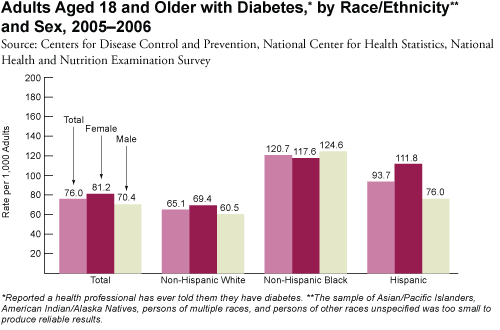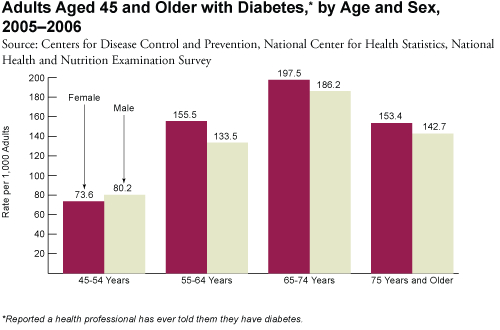Diabetes
Diabetes mellitus is a chronic condition and a leading cause of death and disability in the United States. Complications of diabetes are serious and may include blindness, kidney damage, heart disease, stroke, and nervous system disease. Diabetes is becoming increasingly common among children and young adults. The two main types of diabetes are Type 1 (insulin dependent) and Type 2 (non-insulin dependent). Type 1 diabetes is usually diagnosed in children and young adults, and is commonly referred to as “juvenile diabetes.” Type 2 diabetes is more common; it is often diagnosed among adults but is becoming increasingly common among children. Risk factors for Type 2 diabetes include obesity, physical inactivity, and a family history of the disease.
In 2005–2006, 76.0 per 1,000 adults reported that they had been told by a health professional that they have diabetes. Women were more likely than men to have diabetes overall (81.2 versus 70.4 per 1,000 adults) and in most racial and ethnic groups. Among women, non-Hispanic Blacks and Hispanics had higher rates of diabetes (117.6 and 111.8 per 1,000, respectively) than non-Hispanic Whites (69.4 per 1,000).
Diabetes prevalence generally increases with age. In 2005–2006, among women aged 45 and older, the highest rate of diabetes occurred among women aged 65–74 years (197.5 per 1,000 women). In other words, nearly one in five women in this age group have diabetes. Women aged 55–64 and 75 years and older also had relatively high rates of diabetes (155.5 and 153.4 per 1,000, respectively).


